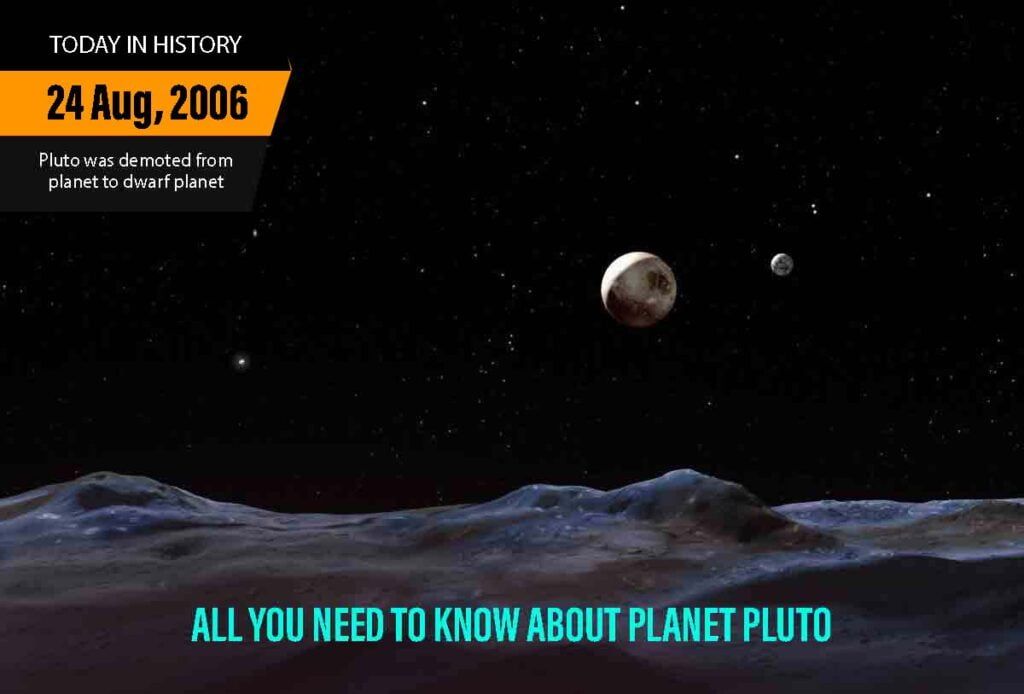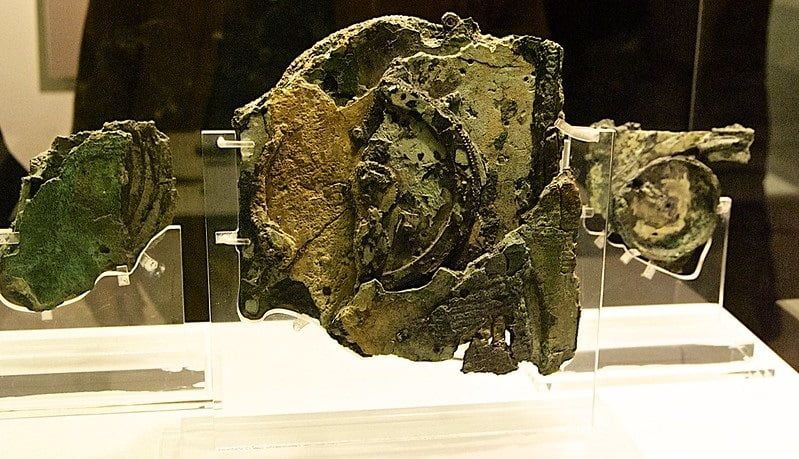Our Solar system is massive in itself. It is practically impossible to step our foot into each and every corner of the Universe. A majority of the realm of the solar system still awaits much exploration. Today in this article we will talk about one such lesser explored entity of our solar system – the mysterious world of Pluto planet. Is Pluto a planet? Why did the scientists declassify the ninth planet of the solar system and assign it under dwarf planets? Read this article till the end to get the information about Pluto planet and the explanation to why was pluto not a planet.
Who Found Pluto Planet – A Detailed Information About Pluto Planet
The discovery of the Pluto planet may be traced back to about 90 years ago when a Young scientist at the Lowell Observatory in the United States made his classic discovery which compelled other astronomers to change their perspective on the solar system.
An American astronomer, Percival Lowell was the first who hypothesized that an unknown entity exists in our giant solar system which was responsible for producing strange deviations and deflections in the planetary orbits of Uranus and Neptune. But, while he made significant progress to prove his hypothesis, his time ended on earth and he left for the unknown. Years later, a young astronaut of the American observatory, Clyde Tombaugh discovered what Lowell had predicted.
Is Pluto A Planet? – The Much Awaited Discovery
On February 18, 1930, while working with photographic plates to compare and contrast if there were any slight changes in the two plates, he found what he was looking for! Pluto Planet was finally discovered. The incomplete mission of Lowell was finally breathed into life by Tombaugh!
The story of how planet Pluto got its name has an interesting story to it. After its discovery, a survey was conducted to assign a name to the mysterious planet. Venetia Burney, a school kid from Oxford, proposed the name Pluto which won a majority of the votes, and thus, the King of Kuiper Belt got its name on May 1st, 1930.
Read More: NASA Space Pictures – View James Webb Space Telescope Images

Unknown Facts About Pluto Planet
The ninth and the smallest planet of our giant solar system, Pluto planet is covered in mysteries of clouds that await further research and exploration. Being positioned at the farthest end from the earth, there is way much less research on this mysterious entity of our solar system. But, in 2015, with the discovery of NASA’s New Horizons space probe, scientists could demystify certain areas of Pluto which have changed the way we see our solar system.
- Positioned in the Kuiper Belt, it is the largest known plutoid, composed of ice, rock, and gases like methane and nitrogen.
- Pluto Planet was known as the smallest planet in our giant universe. The mysterious planet is even smaller than Earth’s natural satellite, our Moon. Pluto weighs about one-sixth of the mass of the moon and one-third of its volume.
- With a radius of 1.185 kilometers or 737 miles, Pluto has about one-sixth the width of that of Earth. Being said, Pluto is half that of the United States.
- One of the unknown facts about Pluto planet Though the farthest planet in our solar system, Pluto is closer in distance to the Sun than Neptune. The sunlight reaches Pluto’s surface in about 5.5 hours.
- How long will it take from Earth to reach Pluto? What is the distance between Earth and Pluto? According to reports, Pluto is positioned at about 5.0514 kilometers away from the Earth. Thus, it might take about 9-12 years to reach planet Pluto from our blue planet.
- Similar to earth, Pluto is also one-third covered with water or ice. When Pluto approaches the Sun, the ice melts forming a thin layer of atmosphere on the planet and it expands. When the planet moves away from the Sun, the ice condenses and the planet gets constricted. Apart from ice and gases, researches suggest that the surface also houses craters, mountains, valleys, etc.
- Information about Pluto planet suggests that the surface of Pluto is divided into different regions. While the large bright area, also known as Heart, is known as Tombaugh Regio, Cthulhu Macula, also known as the Whale was coined as the darker area. Again, the third part is known as the Brass knuckles, which are a region of complete darkness near the equator.
- One of the amazing facts about Pluto planet is that Pluto takes about 153 hours to complete one rotation around the sun. Again, one year on Pluto is equal to 248 earth years!
- Pluto has five moons, Charon, being the largest satellite of Pluto planet, followed by Hydra. Other moons of Pluto are Styx, Nix, and Kerberos. Some scientists believe that Pluto is not a single planet, but Pluto and its moon Charon should be called a double planet!
- In another piece of information about Pluto planet, it is being claimed that the same side of Charon faces Pluto. That is, Charon can only be seen from one side of the planet. The other side can never get to see the largest moon, Pluto.
- The temperature on Pluto ranges from – 375 to – 400 degrees Fahrenheit / – 226 to – 240 degrees Celsius.
- The name of the planet was given after the Roman god of darkness – Hades. As stories say, being far away from the sub, the planet generally thrives in darkness, thus, the name aptly fits into its positioning in the Solar system.
Read More: Unknown Facts about 12 Men who Walked On Moon
Why Was Pluto Not A Planet – The Hotbed Of Controversies
On 24/08/ 2006, Pluto was demoted from Planet to dwarf planet after the IAU ( International Astronomical Union) approved a reclassification of the solar system. But, what led to such declassification? Why was Pluto not a planet? What criteria of the planet did it fail to meet?
With the discovery of Pluto, astronomers could further trace the solar system beyond Neptune!
On 30th August 1992, David Jewitt and Jane Luu from the University of Hawaii found a region in space known as the trans-Neptunian region which has about 1000 Trans Neptunian objects orbiting around it. This discovery fueled further reserve and on 21 October 2003, Mike Brown from Caltech, Chad Trujillo from the Gemini Observatory, and David Rabinowitz from Yale University discovered another solar entity with a mass more than Pluto and that it too consists of a satellite. Such advances in the history of astronomy compelled scientists to put forward a definition for a planet. For this, the IAY formed a committee that later put forward a draft resolution on the definition of a planet.
The definition is as follows, A celestial body that (a) is in orbit around the Sun, (b) has sufficient mass for itself gravity to overcome rigid body forces so that it assumes a hydrostatic equilibrium (nearly round) shape, and (c) has cleared the neighborhood around its orbit. But, then why was Pluto not a planet? This is because the Pluto planet failed to meet the third criterion. On account of its small size, it was reclassified as a dwarf planet along with others such as Ceres and Eris. Thus, in August 2006, Pluto was removed from the category of planets and was placed into the group of dwarf planets.
Pluto Planet – The Less Explored Realm Of Our Solar System
Though the Pluto planet was demoted from being a planet to a dwarf planet, many scientists still believe that Pluto should be called a planet because recent missions reveal a world of mystery – the mystery that still awaits further exploration!
For more related articles, visit Discover












